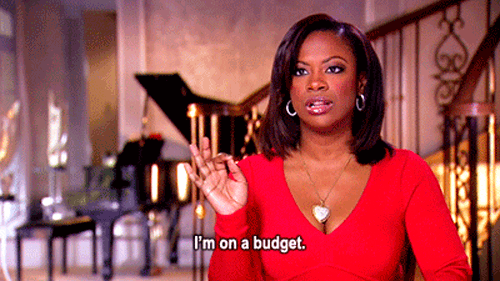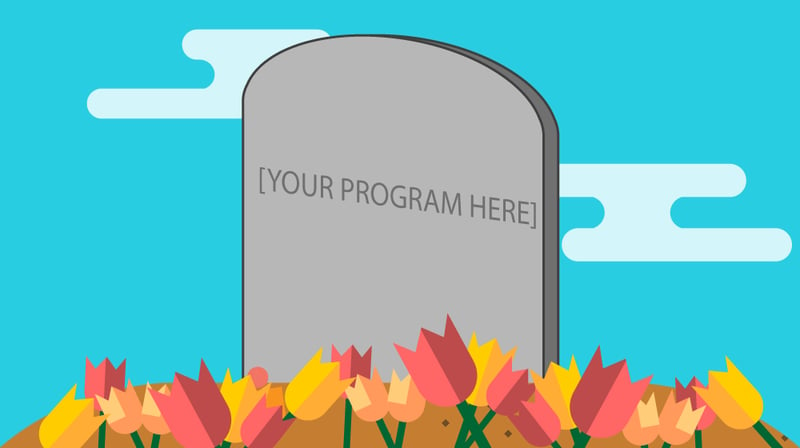What makes for an awesome event?
If you’ve been to one, you don’t know all the details that went into it; you just know you had a good time. If you’ve been to an event that wasn’t awesome, well, the lackluster details stand out quickly.
Some people host events so well they make it look easy. However, you don’t have to be a natural event planner to create an awesome event. It’s a skill that can be developed.
When students learn how to create awesome events, they also build critical workforce skills, engage students, and develop relationships.
Events are how student organizations engage with peers and invite involvement. This involvement can become be a launching pad for lifelong friendships, professional development, networking, and career paths. Imagine a college campus without events; it would be like taking away its main source of oxygen for creating opportunities to meet others and try new things.
Creating awesome events also calls into play many skills: Negotiation, planning, coordination, management, advertising, teamwork, prioritizing, giving and receiving feedback, attention to detail, and more. These outside-the-classroom skills translate to career readiness.
In fact, framing event planning as skill development can provide context and meaning for each of your students.
Is your student a “big picture” person who wants to be an entrepreneur? The challenge of coordinating event details will be a necessary learning opportunity.
Does your student have a hard time asking for help and likes to do all the work on their own? They will get practice delegating and managing others.
Is your student disorganized or not a strategic thinker? Planning an awesome event will shine a light on ways they can be more effective and efficient.
Are you looking to help your students go from creating events that are alright to awesome, so they can build skills to talk about in future interviews? We’ve got you covered!

First Things First
1. Goal of the event
Organizing an event without identifying its goals can result in funneling work towards an unknown target without ever knowing if you’ve hit the mark. Starting with goal setting is critical because it guides the process from start to finish, but it’s one that students may not consider before they dive into the details.
How can you help a student determine the purpose of their event? Help them express its outcomes, goals, and takeaways. Who is the audience? Why do they want to hold the event, and why is it important? What will be the value provided by the event for those who attend it? How will your student know if the event is a success?
Learning how to define event goals with these six factors or using the SMART goals system can help students conceptualize what they’re working towards. Mentor students in being thoughtful and intentional here, and you’ll set them up for success — not just with this event, but in developing this skill for their professional careers.
2. Reservations and registration
On a busy campus where space is a rare commodity, it’s essential to determine the date, time, and location of your event early.
Help a student to determine if their desired event date allows enough planning time by working backwards. While they may be inclined to choose their favorite space on campus, remind them of the goals you established. What space, dates, and times will help achieve those goals? Working with campus reservations can offer students an invaluable learning model for planning process and procedures.

Making the reservation can be a simple task if the space a student wants is available. (What a huge relief!)
However, registering the event may ask more of your student. Your activities office may require students to register their event with them, and this process may require that students have some items ready to report — like event details, advisor approval, and the guest list.
Since reservations and registration can be two separate processes with different deadlines, advising and support can go a long way to guide students along this phase.
Coordinating Details
3. Budget
Ah, the budget — the reality check we all need on our wildest hopes and dreams. Luckily, savvy student affairs professionals know that having a small budget doesn’t mean you can’t host an awesome event.

Many working professionals don’t know how to manage or use a budget, so don’t assume a student does. Help them determine the budget, including brainstorming donation possibilities and considering what can be pooled from other involved groups. Show them how to track spending, manage donations, and communicate updates to peers and staff so that their leadership in this area grows stronger.
Lastly, keeping your group on track for other aspects of planning the event can help them understand that these pieces will ultimately come together to create a successful event. And if an event is a success, they’ll feel good about the budget spent hosting it.
4. Partnerships
Working with co-sponsors can be excellent training. Securing partnerships lends strength to the event while also forcing your students to up their game in planning, considering the needs and viewpoints of others, and providing instructions and updates to those involved.
Volunteer power, wider advertising reach, and a great turnout can all be benefits of effective partnerships, so it’s important to teach the nuances of this work to students.
If the event will be off campus, encourage your student to anticipate extra time needed to work with community spaces. The consideration here is understanding and meeting the requirements of the outside venue, the student organization’s national headquarters (if applicable), and the institution. Remember, your institution’s alcohol policy may still apply, so check with the relevant offices.
5. Delegation and management
Having outside partners is of little value if you don’t create buy-in and involvement with your own members. By nature, event work is teamwork — not only by the partnerships described above but by the internal teamwork required to coordinate details. Your students will have the opportunity to practice not only delegating tasks and managing others but getting the organization excited about the event.
What are unique ways to help a student here? Help them understand the concept of “motivating the middle” as a way to engage with their middle-third members for the event. It’s easy for student leaders to guilt trip and pressure these members to be as invested as they are, but that can backfire. Encourage them to consider ending mandatory involvement and, instead, to seek to inspire members as a way to garner involvement and support.
Promotion
6. Identify and coordinate event draws
Awesome events often mean attendees leave with something great. You can promote the day, time, and location of your event, but what else do you have to promote? What’s the draw? You’re asking people to attend your event for an hour when they could be doing anything else. What’s in it for them?
Before your student starts advertising, help them explore ways to entice attendees. Options include food, raffle prizes, giveaways, freebies, or another unique draw. For these to work their magic, however, they have to be included in advertising. Help your student plan backward so they can determine when they want to start advertising. This will help them develop a timeline to identify and coordinate the event draws.

7. Advertising
Advertising is a make-it-or-break-it factor. It bridges the gap between your audience and the event. If your student has flawlessly planned every detail but didn’t advertise it well, the event will surely flop. Help students understand that advertising is not just about creating a flyer. It needs early, dedicated attention to make the event successful.
Excellent work here requires that certain tasks are done before advertising goes out so these details are included in the messaging. Examples include: The event name and theme, colors, fonts, graphics, co-sponsor logos, food, and giveaways. Because advertising involves creating and revising drafts and sharing the final product with co-sponsors for their own use, ample time should be reserved for this process.
Management of advertising is another sizeable component. Distribution of flyers, ordering and placement of signage, social media promotion, scheduling tabling, and staffing can all be moving pieces in successful advertising. And remember, it’s not just the content of your advertising but the frequency of it that matters. Not convinced? Check out “The Rule of 27” to learn more.
Execute and Review
8. Day of the event
Sometimes students get so caught up in logistics or promotion that they forget to pay just as much attention to the execution of tasks on the big day. Yet, a great event has a detailed map of what happens the week of the event, the day before the event, and the day of the event. Help your student create this “day of” schedule and checklist so they’re ready to lead everyone through a successful day.
Communication with event partners needs to be timely and clear. For example, don’t just say that “set up starts at 10 a.m.” Do they check in with someone upon arrival? Will their table or space be labeled? You can help a student anticipate what questions folks may have so they can communicate this information seamlessly.
Check out these 23 commonly missed items on event planning checklists for a general list or get to work creating your own day-of event checklist.

9. Debrief and review (and celebrate!)
Part of helping students create awesome events is ensuring they learn from their experiences and improve on skills over time. This can’t happen without reflection — a critical part of any learning process.
It may not occur to your student to have a post-event debriefing session, but it’s a valuable opportunity. Encourage them to include a debrief and review as part of the planning roadmap — so everyone is prepared for this as a final expectation — instead of trying to re-group everyone after they scatter out to other projects.
Help prepare your student for this task with these 4 simple steps to a successful debrief or considering the value of both a front-end and back-end debrief. Your institution may even provide a great post-event wrap-up checklist for students, like this one from Ferris University.
Make sure to celebrate, too! Include time in the debrief to recognize and thank the team that helped make it happen.

An awesome event is one where not only those who attend have a good time, but those planning it enjoy bringing it to fruition. Goals are met for the event, plus growth is achieved for the lead planner and their team.
For your student, that might mean they not only had fun, but they learned more about themselves and how to work with others, became more confident in their leadership abilities, or better developed their event planning skills for the future.
What are your strategies for helping students create awesome events? Be sure to let us know @themoderncampus and @PriyaThomas757 on Twitter!





